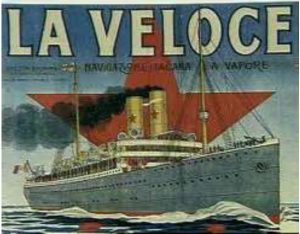
The story of the Crachesi immigration to the Americas occurs in two phases. Both phases share common motives — the search for a better life; which is the reason behind all immigration and are usually part of larger events of the eras they occur.
Before the 1880-1924 arrival of Crachesi most immigrants to the US arrived from Western and Northern European nations. Early immigrants were mainly English, Germans, and Scotch-Irish with a small percentage were other Europeans-French, Dutch, Welsh, Swedes, Jews, Irish, Swiss and African slaves who were forced immigrants. By the 1850s 2 million Irish immigrants fleeing the potato famine and 1.5 million Germans fleeing crop failures and the collapse of their democratic revolutions arrived. These immigrants generally were Protestant with some Catholics (particularly the Irish) and their cultures easily meshed into American culture of their era.
Then from 1880—1924, 24 million immigrants arrived primarily from Italy, Croatia, Greece, Poland, Czechoslovakia, Hungry, and Russia. They came for a variety of reasons including economic, social issues, disease, escape from forced military conscription, and religious persecution. This coincided with the boom of the industrial revolution in the eastern US providing opportunities for individuals to fill the need for laborers and created the largest increase in the standard of living and production in history.
These new immigrants faced difficulties in assimilating into American culture that earlier immigrants did not. Most could not speak English, nor were they literate. They typically settled in Eastern seaboard cities and entered low-paying, wage-labor jobs. They filled the growing factories and other jobs such as construction or sewing. Often arriving with little money and forced into substandard housing in the worst sections of the overcrowded cities, their increasing numbers strained the cities causing problems with sanitation, and overcrowding.
Meanwhile, the immigrants created small ethnic communities where they preserved the culture of their homelands by publishing newspapers in their native languages, opening specialty grocery stores, restaurants, establishing churches, synagogues, and schools. But these enclaves could not protect immigrants from discrimination. Native-born Americans blamed the immigrants for the poor conditions and for taking over “their” nation creating prejudices and bias that continues today. These biases were among the underlying reasons for US Immigration Act of 1924 creating a quota system reducing the number of immigrants from southern and eastern
Europe and largely ending the Crachesi migration until the mid-1960s when a new wave arrived. The causes creating the need for the first group of Cracotans to leave the land they inhabited for over a thousand years were multiple and built over a long time. These included economic, social, and political issues that impacted Italy for centuries reaching a peak when the future in Craco no longer offered an opportunity for a better life intersected with better conditions elsewhere.
This occurred twice, from 1880-1924 and again in the mid-1960s after the Frana. The first wave of arrivals from Craco coincides with the great immigration period from 1880-1924 that brought millions of immigrants from Europe to the US. During this period over 1600 Crachesi arrived along with 4 million other Italians.